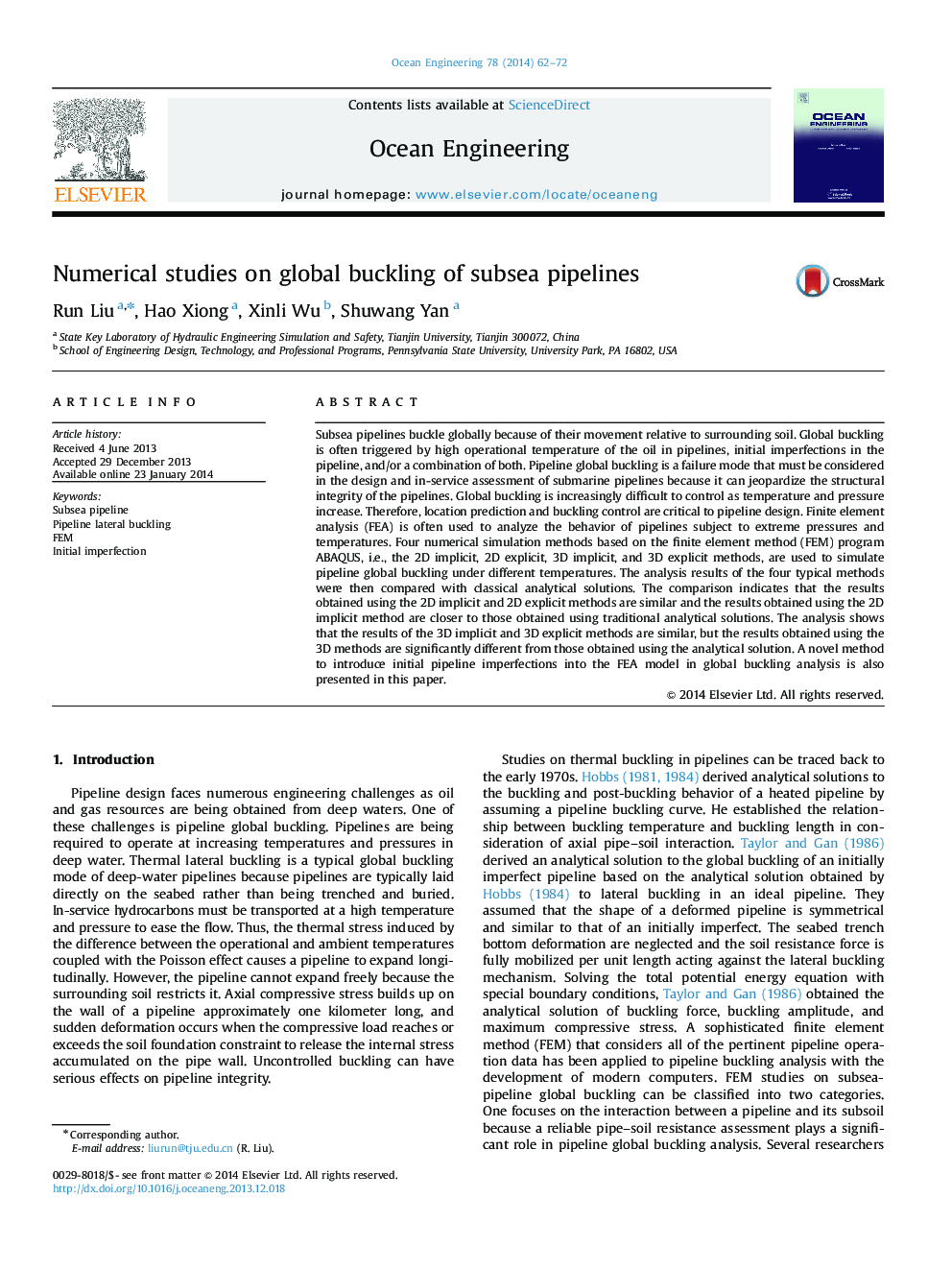| Article ID | Journal | Published Year | Pages | File Type |
|---|---|---|---|---|
| 1725741 | Ocean Engineering | 2014 | 11 Pages |
Abstract
Subsea pipelines buckle globally because of their movement relative to surrounding soil. Global buckling is often triggered by high operational temperature of the oil in pipelines, initial imperfections in the pipeline, and/or a combination of both. Pipeline global buckling is a failure mode that must be considered in the design and in-service assessment of submarine pipelines because it can jeopardize the structural integrity of the pipelines. Global buckling is increasingly difficult to control as temperature and pressure increase. Therefore, location prediction and buckling control are critical to pipeline design. Finite element analysis (FEA) is often used to analyze the behavior of pipelines subject to extreme pressures and temperatures. Four numerical simulation methods based on the finite element method (FEM) program ABAQUS, i.e., the 2D implicit, 2D explicit, 3D implicit, and 3D explicit methods, are used to simulate pipeline global buckling under different temperatures. The analysis results of the four typical methods were then compared with classical analytical solutions. The comparison indicates that the results obtained using the 2D implicit and 2D explicit methods are similar and the results obtained using the 2D implicit method are closer to those obtained using traditional analytical solutions. The analysis shows that the results of the 3D implicit and 3D explicit methods are similar, but the results obtained using the 3D methods are significantly different from those obtained using the analytical solution. A novel method to introduce initial pipeline imperfections into the FEA model in global buckling analysis is also presented in this paper.
Related Topics
Physical Sciences and Engineering
Engineering
Ocean Engineering
Authors
Run Liu, Hao Xiong, Xinli Wu, Shuwang Yan,
